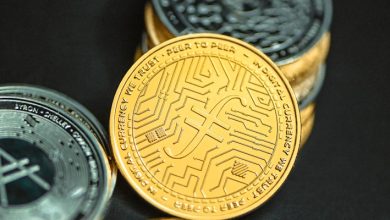What Are Wrapped Tokens? A Beginner’s Guide

- Understanding the Basics of Wrapped Tokens
- The Concept of Token Wrapping Explained
- How Wrapped Tokens Bridge Different Blockchains
- Benefits of Using Wrapped Tokens
- Popular Wrapped Tokens in the Crypto Market
- Risks and Considerations When Dealing with Wrapped Tokens
Understanding the Basics of Wrapped Tokens
Wrapped tokens are a type of digital asset that represents another cryptocurrency or asset. They are created on a separate blockchain to allow for their use on different networks. This process involves “wrapping” the original asset by locking it in a smart contract and issuing a token that corresponds to its value.
One of the main reasons for wrapping tokens is to enable cross-chain compatibility. By creating wrapped versions of assets, users can easily transfer and use them on various blockchains without the need for centralized exchanges or complex processes. This interoperability has become increasingly important as the cryptocurrency ecosystem continues to expand.
When a user wants to convert their tokens back to the original asset, they can simply burn the wrapped tokens, which will unlock the original asset held in the smart contract. This process ensures that the value of the wrapped token is always backed by an equivalent amount of the underlying asset, providing security and stability to users.
The Concept of Token Wrapping Explained
Token wrapping is a process where a certain amount of a native cryptocurrency is locked up or “wrapped” in a smart contract, and in return, an equivalent amount of a new token is minted and issued on a different blockchain. This new token, known as a wrapped token, is pegged to the value of the original cryptocurrency, allowing it to be used on a different blockchain while still retaining the same value.
The concept of token wrapping is gaining traction in the world of decentralized finance (DeFi) as it allows users to access the liquidity and functionality of different blockchains without having to go through the traditional process of exchanging one cryptocurrency for another. This can be particularly useful for users who want to take advantage of the unique features of a particular blockchain without having to give up their holdings in another cryptocurrency.
By wrapping tokens, users can effectively bridge the gap between different blockchains and take advantage of the benefits that each one has to offer. This can open up new opportunities for trading, lending, and borrowing across different blockchain networks, ultimately leading to a more interconnected and efficient DeFi ecosystem.
How Wrapped Tokens Bridge Different Blockchains
Wrapped tokens play a crucial role in bridging different blockchains by enabling assets to be transferred seamlessly between them. These tokens are created on one blockchain by locking a certain amount of the original asset, which is then represented as a wrapped token on another blockchain. This process allows users to interact with decentralized applications and trade assets across multiple blockchains without having to rely on centralized exchanges.
One of the main benefits of wrapped tokens is their ability to unlock liquidity by bringing assets from different blockchains into decentralized finance (DeFi) ecosystems. This interoperability also facilitates cross-chain transactions, making it easier for users to diversify their portfolios and access a wider range of investment opportunities. Additionally, wrapped tokens help to reduce the fragmentation of liquidity across various blockchains, ultimately contributing to a more interconnected and efficient blockchain ecosystem.
By utilizing wrapped tokens, users can take advantage of the unique features and capabilities offered by different blockchains without being limited to a single network. This flexibility not only enhances the overall user experience but also promotes innovation and collaboration within the blockchain space. As more projects and platforms adopt wrapped tokens, we can expect to see increased interoperability and fluidity between different blockchains, ultimately driving growth and adoption across the entire blockchain industry.
Benefits of Using Wrapped Tokens
There are several benefits to using wrapped tokens in the cryptocurrency space. One of the main advantages is increased liquidity, as wrapped tokens allow assets from different blockchains to be traded on decentralized exchanges. This opens up more trading opportunities and helps to bridge the gap between different blockchain ecosystems.
Another benefit is enhanced flexibility, as wrapped tokens can be easily transferred and used across different blockchain networks. This interoperability makes it easier for users to access a wide range of decentralized applications and services without being limited by the constraints of a single blockchain.
Additionally, wrapped tokens can help to reduce transaction costs and speed up transaction times, especially when moving assets between different blockchains. This can make it more cost-effective and efficient for users to manage their digital assets and participate in various blockchain activities.
Overall, the use of wrapped tokens can bring greater efficiency, flexibility, and accessibility to the world of decentralized finance, making it easier for users to navigate the complexities of the blockchain ecosystem and take advantage of the many opportunities it offers.
Popular Wrapped Tokens in the Crypto Market
Several popular wrapped tokens have gained traction in the crypto market due to their ability to bridge the gap between different blockchain networks and bring more liquidity to decentralized finance (DeFi) platforms. These wrapped tokens are essentially representations of other cryptocurrencies or assets that are pegged to the value of the underlying asset. Some of the most popular wrapped tokens include:
- Ethereum (ETH) Wrapped Bitcoin (WBTC): This is one of the most widely used wrapped tokens in the market, allowing users to bring Bitcoin to the Ethereum network to participate in DeFi applications.
- Wrapped Ether (WETH): WETH is a popular wrapped token that represents Ether on the Ethereum network, enabling users to trade and use Ether in DeFi platforms more easily.
- Wrapped Litecoin (WLTC): WLTC is a wrapped token that mirrors the value of Litecoin on the Ethereum network, providing more liquidity options for Litecoin holders.
- Wrapped Filecoin (WFIL): WFIL is a wrapped token that brings Filecoin to the Ethereum network, allowing Filecoin holders to interact with DeFi applications.
- Wrapped Tezos (WTZ): WTZ is a wrapped token that represents Tezos on the Ethereum network, enabling Tezos holders to leverage their assets in the DeFi ecosystem.
These popular wrapped tokens have played a crucial role in expanding the use cases of various cryptocurrencies and assets, making it easier for users to access DeFi platforms and engage in a wide range of financial activities in the blockchain space.
Risks and Considerations When Dealing with Wrapped Tokens
When dealing with wrapped tokens, there are several risks and considerations to keep in mind. One of the main risks is the potential for smart contract vulnerabilities. Since wrapped tokens rely on smart contracts to function, any vulnerabilities in the code could result in the loss of funds.
Another consideration is the risk of centralization. Some wrapped token projects may rely on a central authority to mint and redeem tokens, which goes against the decentralized nature of blockchain technology. This central point of failure could lead to issues such as censorship and manipulation.
Additionally, there is a risk of regulatory scrutiny when dealing with wrapped tokens. Since these tokens often represent assets from the real world, regulators may take an interest in how they are being used. This could lead to legal challenges and restrictions on their use.
It is also important to consider the risk of loss or theft when using wrapped tokens. Since these tokens are typically held in a digital wallet, they are vulnerable to hacking and other security breaches. It is crucial to take steps to secure your wallet and ensure that your tokens are safe from unauthorized access.



